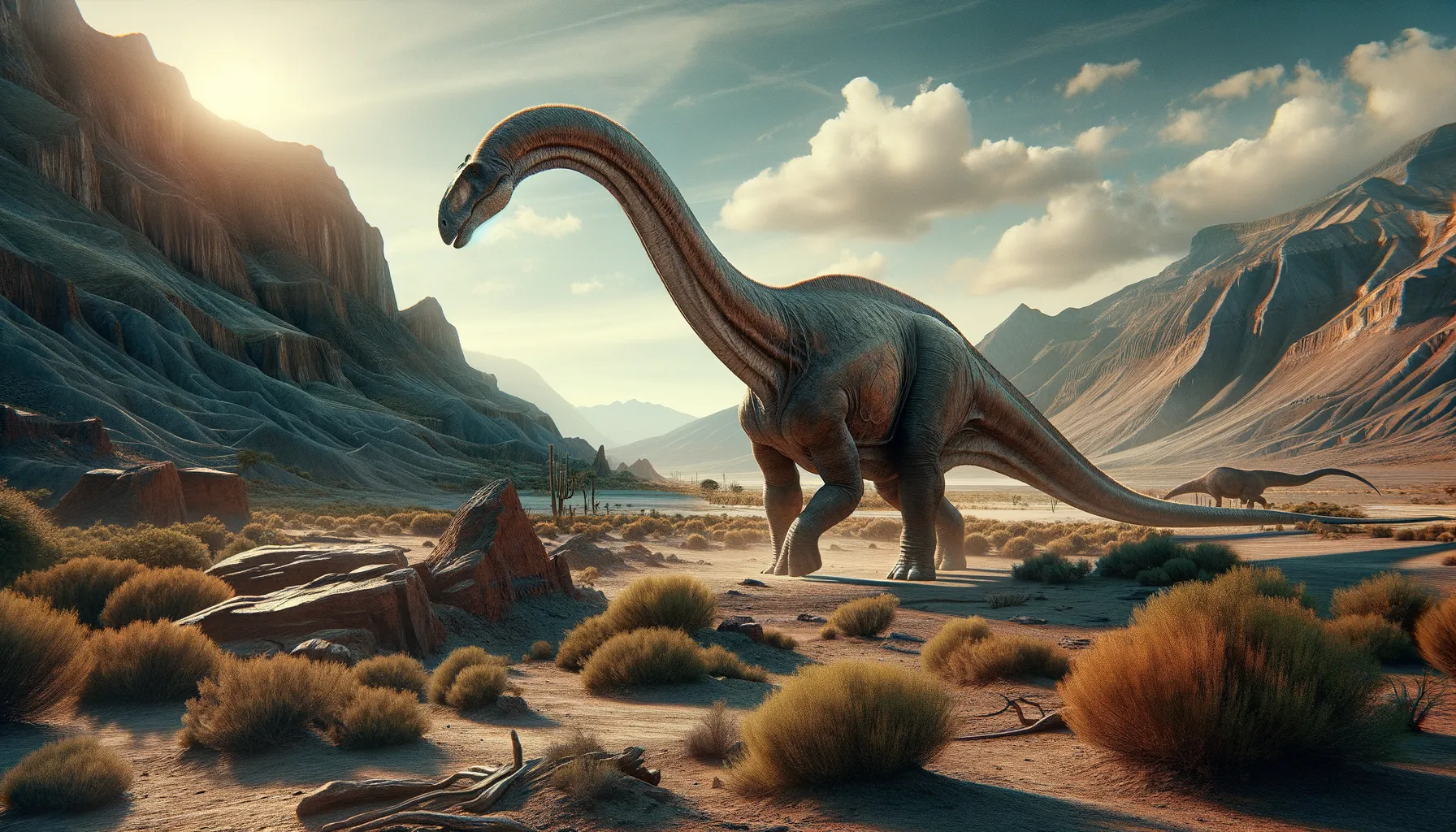
Atacamatitan
A giant from the ancient desert sands.
Period
Cretaceous
Length
Roughly 65 feet long.
Height
Around 10 to 13 feet at the shoulder.
Weight
Approximately 20 to 30 tons.
Atacamatitan was a large, long-necked dinosaur that roamed South America during the Cretaceous period. Its massive size suggests it was a sauropod, part of a group known for their colossal stature and long necks. These herbivorous dinosaurs may have roamed in herds, using their long necks to reach high vegetation. Fossils found in the arid regions of the Atacama Desert shed light on its existence.
Diet
Atacamatitan was a herbivore, primarily consuming plant material such as leaves and ferns. Its long neck allowed it to reach vegetation that other herbivores could not access.
Hunting
As a herbivore, Atacamatitan did not hunt. It likely spent its days grazing on plants, using its size to ward off potential predators rather than engaging in active defense.
Environmental challenges
Atacamatitan lived in a relatively arid environment, requiring it to travel significant distances in search of water and food. Seasonal changes could have posed challenges, with fluctuations in available vegetation. Predators may have targeted young or weak individuals, necessitating a degree of protection within the herd.
Speed
Likely slow, as it was a large, heavy creature.
Lifespan
Estimated around 70 to 80 years.
First discovery
Discovered in the Atacama Desert, Chile, in 2011.
Fun Facts
- Atacamatitan was a gigantic dinosaur that lived in South America during the Late Cretaceous period.
- This dinosaur's name means 'giant from the Atacama Desert,' a nod to where its fossils were discovered in Chile.
- Atacamatitan belonged to the group of dinosaurs known as titanosaurs, which were some of the largest animals to ever walk the Earth.
- Despite its enormous size, Atacamatitan was a herbivore, and it would have feasted on the lush vegetation available in its time.
- The remains of Atacamatitan were first discovered in 2000, providing valuable insights into the diversity of titanosaurs in South America.
- Atacamatitan was roughly estimated to be about 8 to 10 meters long, making it a medium-sized titanosaur compared to some of its colossal relatives.
- Scientists use the fossils of Atacamatitan to study how these massive creatures managed to thrive in varying climates and terrains.
Growth and Development
Atacamatitan likely had a slow growth rate, taking several decades to reach full size. As with many sauropods, young Atacamatitan would have faced high mortality rates, with only a fraction reaching adulthood. Once mature, their large size provided them with a degree of safety from predators.
Habitat
Its habitat consisted of semi-arid plains with sparse vegetation. This environment would have challenged Atacamatitan to adapt to long walks between feeding and watering spots. The climate would have been warm, influencing their growth and lifestyle.
Interaction with other species
Atacamatitan may have lived in herds, offering protection and social benefits. They likely coexisted with other herbivorous dinosaurs, sharing resources and territory. Predators in the area would have been a threat, particularly to juveniles, but Atacamatitan's size offered protection.
Natural lifespan
Naturally, they might have lived up to 80 years.
Reproduction
Atacamatitan likely laid eggs, similar to other sauropods. Nests were probably made in communal nesting grounds, providing warmth and protection. Hatchlings would have been relatively small and vulnerable, relying on herd protection for survival.
Social behaviour
These dinosaurs might have displayed social behaviors such as traveling and feeding in herds. Social structure within the herd may have included communal nurturing of young and shared defense strategies against predators.
Fossil locations
Fossils of Atacamatitan have been found in the Atacama Desert in Chile. This location is famous for its dry, arid conditions, which helped preserve the remains. Excavations have provided a glimpse into its existence and living conditions during the Cretaceous period.
